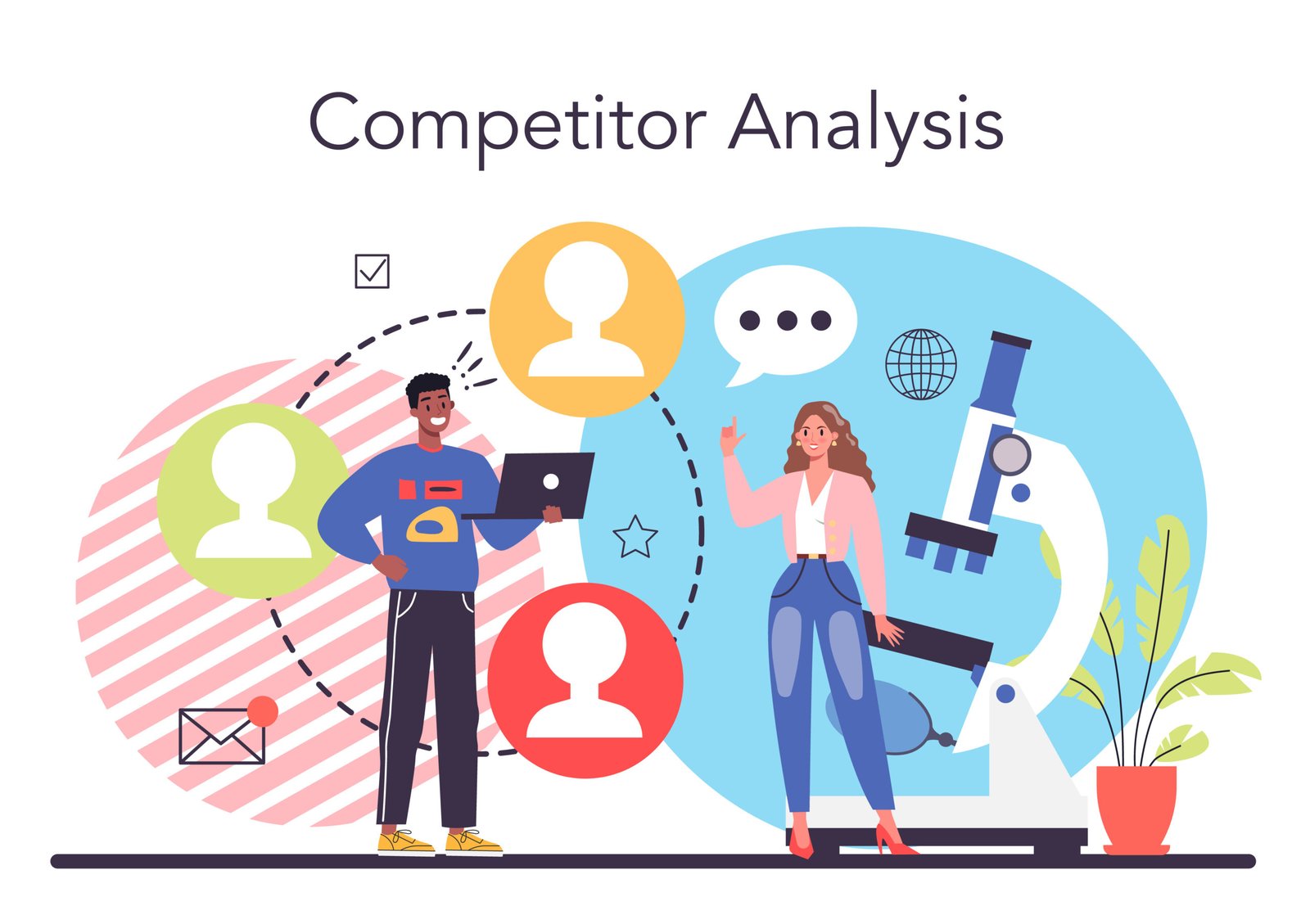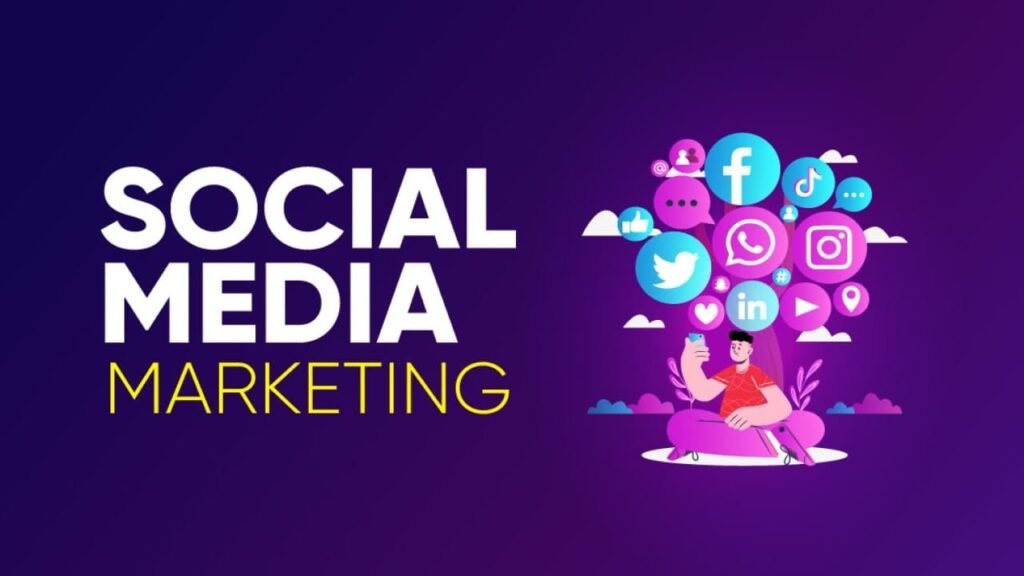Mastering Social Media Competitor Analysis: A Step-by-Step Guide

Introduction
Do you have an idea of what your competitors are doing on social media marketing – and how it is impacting your brand growth? Almost immediately we think, posting content won’t provide the proper insights needed to grow anymore. You need competitive insight to understand your competition, analyze their gaps, and discover what opportunities can strategically position you to disrupt and differentiate yourself in the marketplace. This is where Social Media Competitor Analysis comes into play.
Successful Social Media competitor analysis may provide consistent insights into your competitors’ strategies, helping you to understand why they do something – or do not do something – so you can modify your campaigns to improve your chances of success. According to one survey sprout social, 56% of marketers assess competitors to enhance their performance and content planning for social media. If you want to grow faster and smarter, competitor analysis is no longer a “maybe” or “optional” plan to have in your plan. It is now a “have to” or “must” have step in your overall strategy.
In this guide we will take to step you through a more systematic process of social media competitor analysis while measuring against competitor standardized key performance indicators while benchmarking high performing over a continuum then using data to develop and implement strategic social media frameworks that will drive better results. Ready to learn the unanswered questions from your marketing competition? Let’s get started!
What Is Social Media Competitor Analysis?
Social Media Competitor Analysis is tracking and assessing your competitors’ social media strategies to understand what is driving their growth. It looks at their content, engagement rates, follower growth, and campaign performance to expose opportunities for your own brand.
Do you know what is allowing your competitors to win on Instagram or TikTok? Is it the type of content they post? The timing of their campaigns? Engagement with their audience? Without the proper tracking and assessment of your competitors for social, there are potential strategies that you could miss that would be a game changer for your marketing.
In a time when there is so much clutter in the digital space, a Social Media Competitor Analysis is not optional. With the potential reach to over 4.95 billion people (Statista), global brands are competing for someone’s attention, every second. It is your job to utilize social media analytics in a way that can help you find opportunities, be ahead of your competitors, and do what it takes to develop data-driven campaigns to maximize reach and engagement.
Simply put, it’s not about launching a campaign after competitor campaigns. It is about learning what works, where competitors have made mistakes, and building a strategy that allows your brand to shine.
Why Social Media Competitor Analysis Matters for Your Brand
In the world we live in, which is dominated by the digital landscape, it easy to understand that Social Media Competitor Analysis isn’t just a “nice-to-have” — it’s now a vital part of building a winning strategy. By examining what the competition is doing well (or not so well), you have a roadmap for how to improve your own social media strategy.
So, why is this important?
- Discover insights about your audience: It’s all about discovering what type, posting frequency, style, or tone resonates most with your target audience. Are they engaging most with Reels, polls, or carousels?
- Find new opportunities: Always looking for new content opportunities? Then use the analysis to find out if your competitor is utilizing a platform or technique successfully (like TikTok trends or influencer partnerships) so you don’t miss it!
- Increase engagement: Sprout Social says companies that track and study competitor social strategies see a group of companies seeing over 22% of their audience engage with their company and their product.
- Stay on top of trends: Social trends change rapidly. Tracking your competitors will allow you to maintain a step ahead instead of feeling like you are always catching up!
If you find yourself wanting to know what your competitor is doing to have content go viral lead every week while you struggle, the answer lies much in part due to the benefits of Social Media Competitor Analysis. You can optimize on audience growth strategies, avoid costly audience mistakes, and develop campaigns based on actual data rather than guessing!
When you understand the motivations behind your competitors’ achievements, you can make smarter, quicker marketing decisions that will directly benefit your brand’s growth.
Step-by-Step Guide to Performing Social Media Competitor Analysis
Social Media Competitor Analysis is more than just eavesdropping on your competitors; it involves identifying actionable insights you can implement to better your strategy. Below is a step-by-step guide to aid you in identifying chances, growing engagement, and outperforming your competition.
-
Identify Your Top Competitors
You need to know who your rivals are before you can analyze their efforts.
Begin with executing keyword searches on Google and your social platforms. If you’re a fitness brand, you could search “best fitness gear” or “yoga accessories” to note the competitors who are ranking well in search and social feeds.
Look for more narrow hashtags such as #FitnessGear or #HealthyLiving to identify brands that are dominating the conversations.
You can also simply use one of the many competitor research tools like Hootsuite, Sprout Social, or BuzzSumo to do this for you – remember,
There are direct competitors (businesses that offer the same products or services) and indirect (brands that target the same audience but with different products or services) to consider.
Knowing the difference helps with your analysis of your niche and ensures you aren’t overlooking any competitors that may pose a threats:
-
Analyze Competitors’ Social Media Performance
After you have found your competitors, you can check their performance. Look at metrics that are significant, including:
- Follower growth –Have they built their audience steadily or dramatically during a viral event?
- Engagement rate – What is likes, comments, and share rates on social media compared to their audience?
- Posting frequency and timing – Do they post daily? Weekly? Multiple times daily?
- Content themes – What content patterns perform the best (memes? reels? infographics)?
Ask yourself: “Why do they get shared more?”
To ask this additional question can determine their visuals are better, topics are more relevant in your content area, or their content has a stronger subject matter comparison.
Using tools to track engagement rate, Buffer Analyze, or a similar tool, you can see where you are measuring against the competition.
-
Use SWOT Analysis for Deeper Insights
A SWOT (Strengths, Weaknesses, Opportunities, Threats) Analysis enables reviewing of your competition through a 360° lens.
| SWOT Element | Example for Competitor Analysis |
| Strengths | High engagement on TikTok Reels |
| Weaknesses | Poor response rate to customer inquiries |
| Opportunities | Tremendous Growth of live shopping events |
| Threats | New competitor entering the market |
If this same example shows a competitor had amazing video (strength), customer DM (weakness), then you can bridge that competitive gap and acquire downward price with amazing video marketing and the use of customer support.
This systematic method is useful for purposeful social media planning, plus identifying what your competitors strengths and weaknesses that enough to exploit it.
-
Compare Strategies and Build Your Action Plan
The last stage is turning the insights you’ve gained will lead to action. Review your discoveries then ask:
- What types of content have the highest engagement?
- Are there any platforms that competitors neglected that you can take?
- Where are competitors losing traction due to a poor customer experience?
Develop a Social Media Competitor Analysis that includes recommendations and benchmarks per the findings. Then set some SMART goals (Specific, Measurable, Achievable, Relevant, Time-bound).
An example would be: If competitors were seeing success in short-form videos, you would focus on Instagram Reels and TikTok, limiting yourself to 3 posts a week for one of these channels and aiming for a 15% engagement increase in the following 3 months.
This data-driven approach supports accountability to ensure your actionable social media strategy is clear and measurable. Tracking competitor performance can also benchmark over time; thus helping you to stay ahead of your competition while adapting as trends change.
Top Tools for Social Media Competitor Analysis
Selecting the right tools makes the Social Media Competitor Analysis faster, more accurate, and far more insightful. Rather than tracking multiple competitors’ posts one by one, these tools will help you automate competitor tracking and provide valuable data in real-time. The hard part is which tool is the right tool for you?
Now, let’s look at some of the top tools for social media competitive analysis, starring both paid and free options:
-
Hootsuite
Why it is great: Hootsuite is an all-encompassing social analytics software that provides insights into customers as well as competitor analysis on your competitors so you may monitor keywords and run one or more accounts in a single program.
-
Pros:
- Simple scheduling and analytics dashboards.
- Tracks mentions and hashtag mentions on more than one platform.
- Makes reports exportable from a single dashboard for the whole team.
-
Cons:
- Paid plans are quite expensive for small businesses.
- Limited analytics when using a free version
-
Sprout Social
Why it is great: Sprout Social is known for its detailed competitive tracking platforms but can also help a business analyze search for brand engagement and assistance with competitor strategies.
-
Pros:
- Professional reporting without sacrificing visual charts or tables.
- AI features are unlockable for general content promotion and engagement optimization.
- Unparalleled platform for creativity and function when working in teams.
-
Cons:
- Pricing is closer to the higher level, making it more accessible for medium to larger businesses.
Stat: Brands using Sprout Social see an improvement of 22% based on engagement (source).
-
BuzzSumo
Why it’s great: BuzzSumo is perfect when trying to track trending content while monitoring what types of posts are going viral in your niche.
-
Pros:
- Excellent to compare performance of content.
- Has capability to identify top influencers for your industry.
- Great for planning blog strategy & video strategy.
-
Cons:
- Free version limits search of articles per month.
- There is no direct way to schedule posts.
-
SEMrush
Why it is awesome: SEMrush is an excellent proposal for the combination of SEO and social competitor analysis, especially if you want to align your search and social campaigns.
-
Pros:
- Monitor competitor ad strategy and social footprint.
- Combine SEO and PPC data for a complete approach.
- Ideal to measure cross-channel performance tracking.
-
Cons:
- Steeper learning curve for beginners.
- Premium features are limited behind higher plans.
-
Meta Business Suite Insights (Free Option)
Why it’s great: For small business owners, Meta’s free analytics platform for Facebook and Instagram allows you to measure how well you are performing.
-
Pros:
- 100% free and user-friendly.
- Shows audience demographics and trend engagement.
- Good to use for testing small campaigns.
-
Cons:
- Restricted to Meta-owned platforms.
- No advanced competitor tracking.
Conclusion
In an ever-complex digital marketplace, Social Media Competitor Analysis is your best-kept secret for gaining an edge over competition. Understanding what competitors are doing gives you insights to grow with competitive marketing data, and rarely uncovered possibilities for engagement, and campaigns based on audience you see shown.
Why guess when you can use real habit data? Identify a few social media competitors and use free tools like Meta Business Suite Insights, and BuzzSumo, and begin an ongoing social media competitor analysis today.
If you’re prepared to move forward, AGTC’s experts can assist you in creating a plan based on data to enhance social strategy over the long haul.
Do not wait – every day you delay, your competitors are gaining an advantage. Track, learn, and win today.
FAQ
1. Why is social media competitor analysis important for my strategy?
To find out what is working for competitors, identify trends, and uncover new opportunities for your growth. Brands that track competitors report 22% more engagement.
2. What should I include in a social media competitor analysis?
You should analyze engagement, growth in followers, content and types of posts, and frequency of postings. Having a robust social media competitor analysis checklist to ensure you do not overlook key insights.
3. How often should I conduct a social media competitor analysis?
At a minimum, quarterly; however, in very competitive industries, monthly would be ideal. Conducting detailed checks, regularly, would allow you to incorporate changes to your social strategy more frequently.
4. What tools can I use for social media competitor analysis?
Use tools like Hootsuite, Sprout Social and BuzzSumo – or similar tools – to make tracking easier and more precise. Trackers will also save you valuable time & energy.
5. Can social media competitor analysis enhance my content strategy?
Absolutely! It will provide information on which content types engage followers best, which can lead to highly engaged, growing posts.









